Clutch, Roller Weight, Variator
CVT Acceleration Curves – Basic Concept
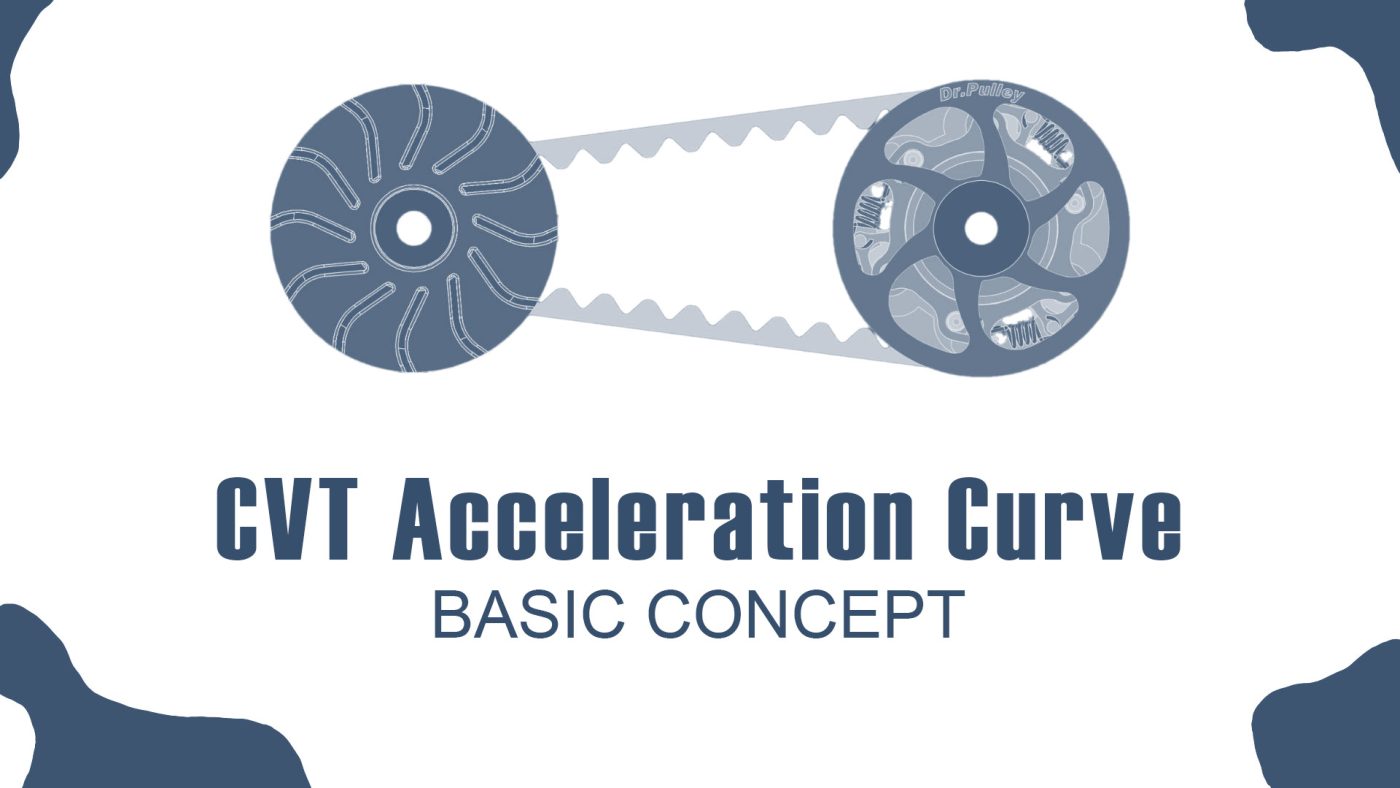
CVT Acceleration Curves – Basic Concept
Concept of a Continuously Variable Transmission, CVT Basic Concept, Description of CVT Full Acceleration Curves.
Basic Introduction
We are going to explain some basic concept of this CVT Transmission.
While Driving Pulley Set includes the Ramp Plate, Variator, Boss, Fan and Roller Weights; Driven Pulley Set includes Driven Face, Torque Spring, Clutch and Clutch Bell.
CVT Full Acceleration Curve
CVT Full Acceleration Curve, where X axis represents the speed of the vehicle and Y axis represents the speed of the engine. The two dashed lines show the low ratio and high ratio, respectively.
We will see five stages in the Curve, including idle, clutch engage, take off, transmission shifting, and overload. While there are different kinds of CVT vehicles, such as scooters, ATVs and UTVs, it’s no problem to apply this concept to most of them.

1st stage – Idle
The 1st stage, Idle. Once a vehicle is started, the engine is running at its lowest possible rpm. The clutch is not engaged, and the vehicle is not in motion. It’s just like when you stop at the traffic light.
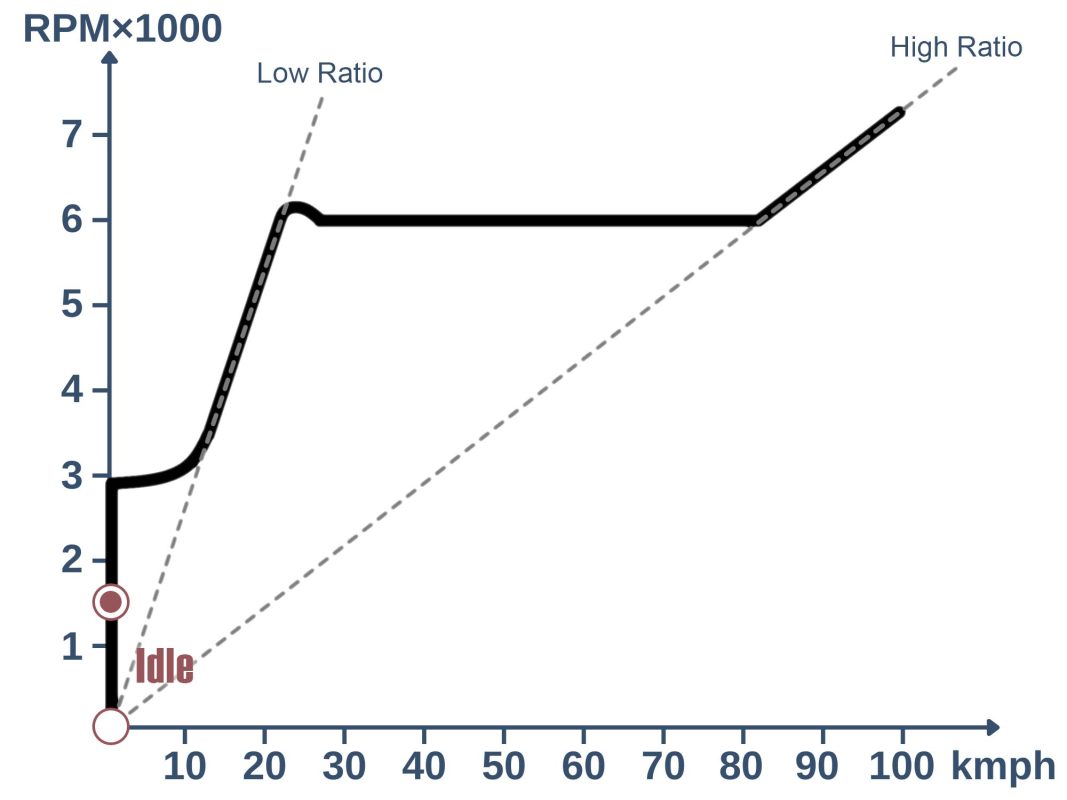
2nd stage – Clutch Engage
The 2nd stage, clutch engaging. Engine rev is increasing, the clutch shoes overcome the strength of clutch springs to move outward and touch the clutch bell. It’s not fully engaged, so the vehicle is still not in motion.
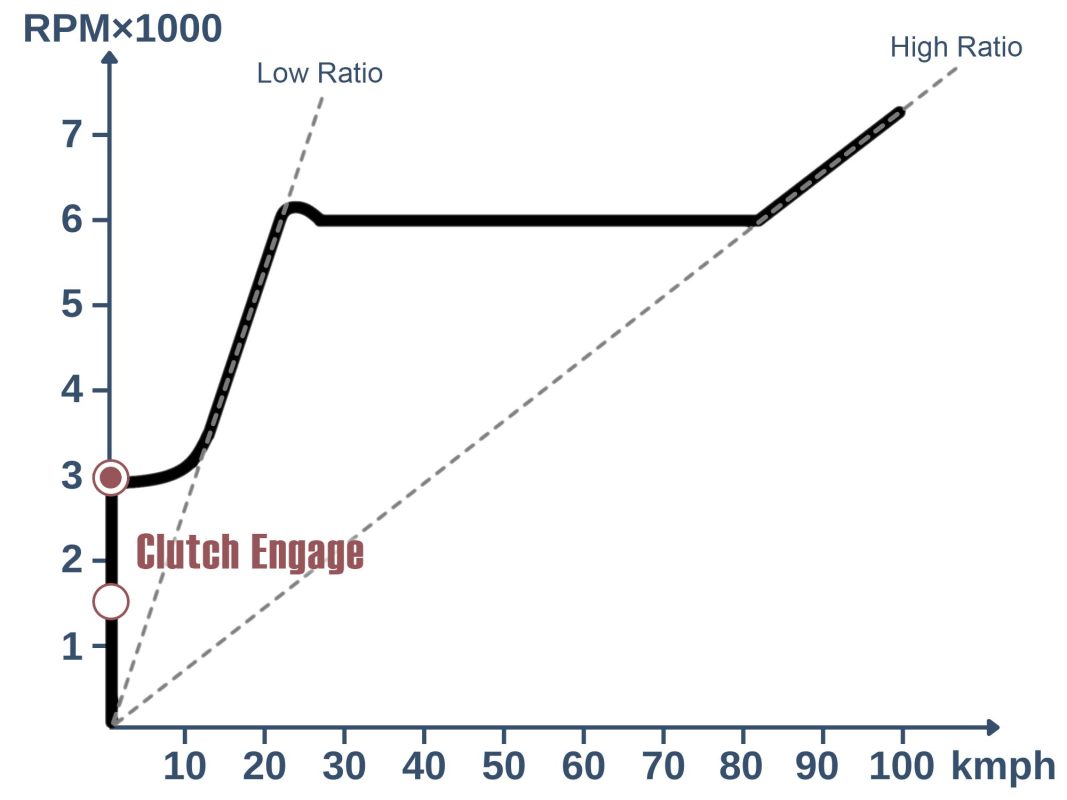
3rd stage – Taking-Off
The 3rd stage is taking-off. The vehicle starts moving and the engine rpm keeps increasing. Though the centrifugal force on the roller weights equals to the preload strength of the torque spring, neither the driven face nor the belt is moving yet.
Low Ratio state starts from the 1st to the 3rd stages, where the 2nd and the 3rd stage covers pretty short period.
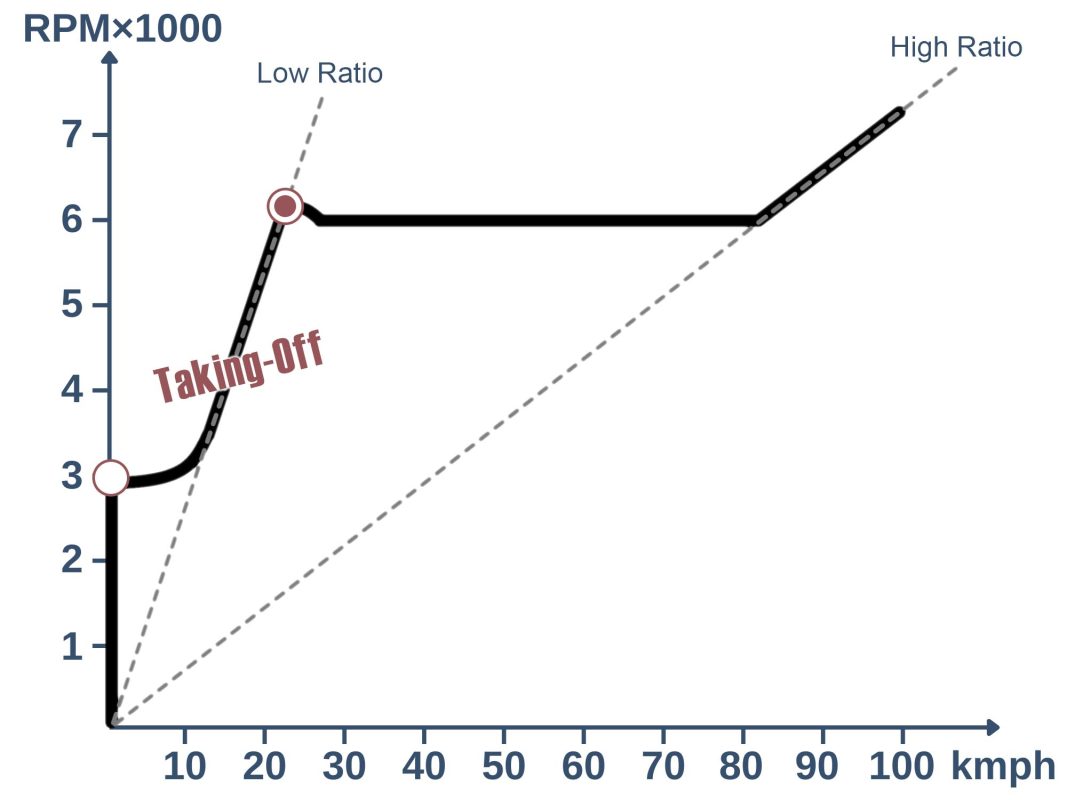
4th stage – Transmission Shifting
The 4th stage is transmission shifting. The thrust strength of the roller weights finally overcomes the preload strength of the torque spring; the movable driving pulley (of the driving pulley set) starts to move; and the belt goes from the lowest to highest position.
In this shifting period, the engine rev rpm remains almost the same, which forms almost a horizontal line in the chart.
It’s the most important stage during all transmission process. The heavier roller weights you use, the lower engine rev rpm (line) it is.
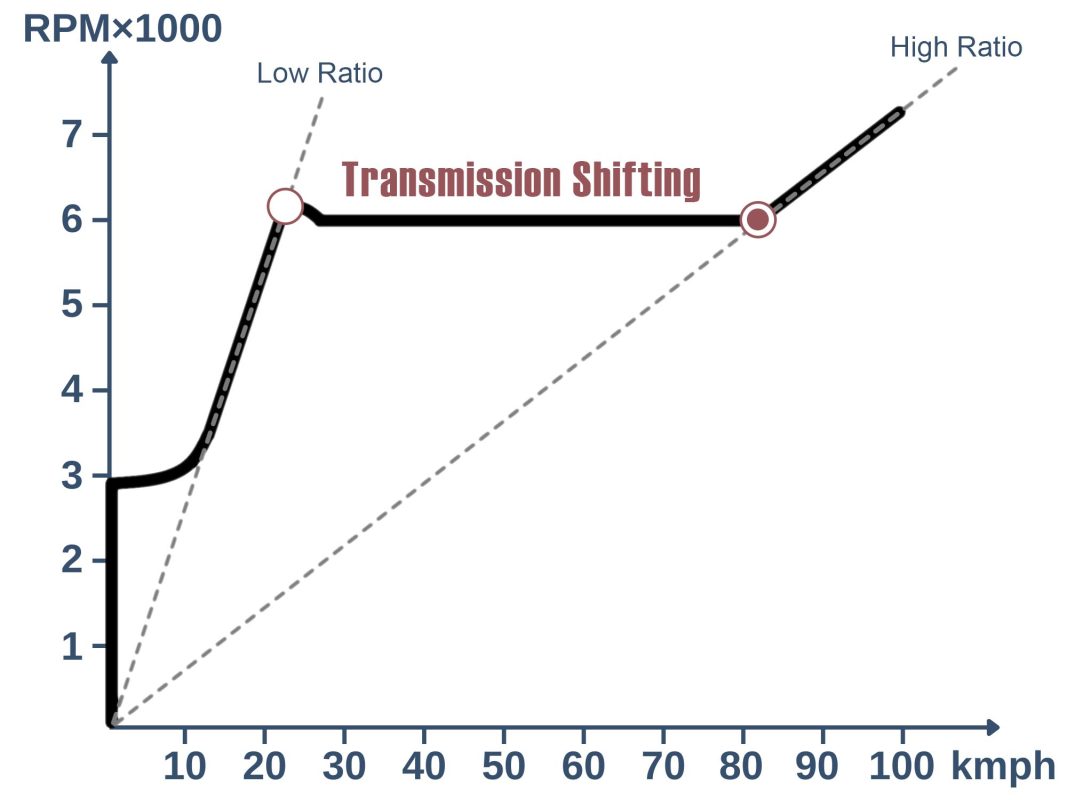
5th stage – Overload
The 5th stage is overload driving. At this stage, the transmission is nor more shifting and stays at high ratio. When the engine runs faster, the vehicle speed can increase.
By the way, the lighter roller weights you use, the shorter this 5th stage lasts.
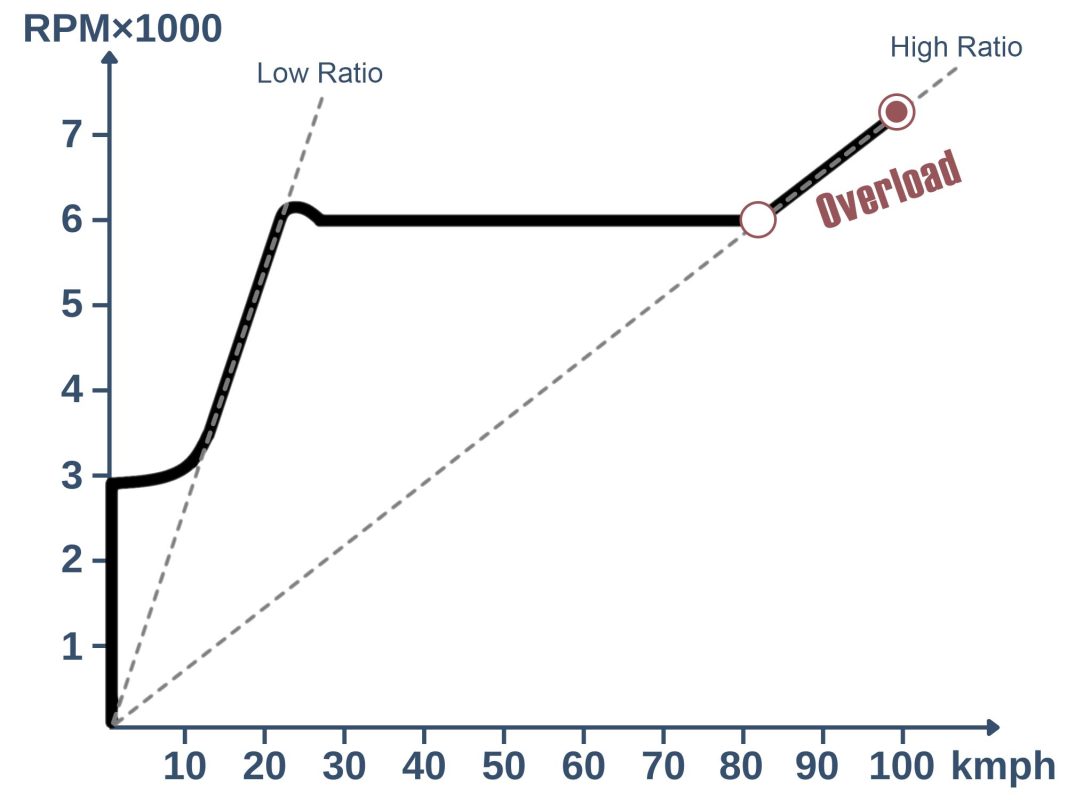
Youtube Video

More Information
Our Youtube url : https://www.youtube.com/c/DrPulley
Online Shop : Sliding Roller Weight











